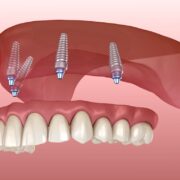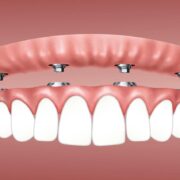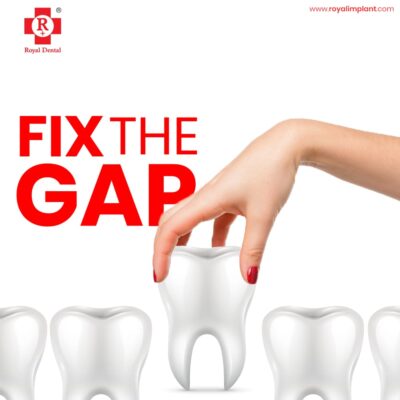A smile is one of the best facial expressions ever. It actually holds a great deal of power, by conveying a positive message to everyone around you. It instantly makes you seem warm, friendly, and approachable. What most people don’t realize, is that it is actually quite difficult to have negative thoughts when we smile. Basically, a smile lets you connect with those around you on a positive level. In fact, it used to be that people never even smiled in photographs. By contrast, modern photographs almost always depict people who are posing with big, bright smiles. This makes the entire picture more visually appealing and better to look at. Smiling is actually something that we often do without even thinking about. Nothing sends the message of great pleasure quite like a happy smile with teeth.
What is the role of teeth in a pretty smile?
Our teeth have such an important role to play in our lives. They help us chew and digest food, they help us to talk and speak clearly and they also give our face its shape. A smile also has other day-to-day benefits. It can give us greater confidence, as well as influence our social lives, careers, and relationships. Because of this, it only makes sense to give our oral health the best care possible.

National Smile Month is our chance to take a look at our oral health, learn more about why a healthy smile is so important and share tips on how to improve and maintain it. Good oral health can have so many wonderful life-changing benefits. A healthy smile can truly transform our visual appearance, and the positivity of our mindset, as well as improve the health of not only our mouth but our body too.
The role of teeth in a pretty smile
Good oral hygiene is essential for maintaining healthy teeth and gums. It involves a daily routine of practices to keep your mouth clean and free of harmful bacteria that can lead to dental problems such as cavities, gum disease, bad breath, and even tooth loss. Here are some reasons why good oral hygiene is important:
- Prevents dental problems: Brushing twice a day, flossing daily, and using mouthwash can help remove food particles and plaque from teeth, preventing the formation of cavities and gum disease.
- Saves money: Good oral hygiene can help prevent expensive dental procedures such as fillings, root canals, and extractions. Regular check-ups and cleanings can also detect and treat dental problems early, preventing them from becoming more serious and costly.
- Maintains overall health: Poor oral hygiene has been linked to several health problems, including heart disease, stroke, and diabetes. By taking care of your teeth and gums, you are also taking care of your overall health.
The impact of facial features on a smile
Facial features can have a significant impact on the appearance of a smile. A smile is not just about the teeth but also involves the muscles and structures of the face. Here are some ways in which facial features can impact a smile:
- Lips: The lips play a crucial role in framing the teeth when someone smiles. Thin or uneven lips can detract from the appearance of the teeth and gums, while full and symmetrical lips can enhance the overall look of the smile.
- Jawline: The shape and size of the jawline can also affect the appearance of a smile. A well-defined jawline can provide a strong foundation for the teeth and help to create an attractive smile.
- Cheeks: The cheeks can also play a role in the appearance of a smile. Full and rounded cheeks can help to support the lips and provide a more youthful and vibrant look.
The role of emotions in a pretty smile
Emotions can play a significant role in creating a pretty smile. When someone experiences positive emotions, such as happiness or joy, they tend to smile more naturally and their facial muscles relax. Leading to a more open and inviting smile. This can create an attractive and engaging smile that others find appealing.
On the other hand, negative emotions such as stress or anxiety can lead to tense facial muscles and a less appealing smile. People may also be less likely to smile when they are feeling sad or upset. Which can make their smile appear forced or insincere.
A “pretty smile” is often characterized by having straight, white teeth that are evenly spaced and proportionate to the rest of the face. Additionally, a “pretty smile” may include features such as full lips, symmetrical facial features, and a warm, friendly expression. However, it’s important to remember that beauty is subjective and there is no one definitive definition of a “pretty smile.”
The cultural and societal perspectives of a pretty smile
The definition of a “pretty” smile can vary across different cultures and societies. In some cultures, a smile that reveals straight and white teeth may be considered the standard for beauty. While in others, a gap-toothed smile may be celebrated. In many societies, a pretty smile is often associated with positive qualities such as friendliness, approachability, and confidence. A smile can be seen as a way of expressing warmth and kindness, and people with attractive smiles may be perceived as more trustworthy and likable.

However, societal expectations around what constitutes a pretty smile can also be influenced by factors such as age, gender, and socioeconomic status. For example, women may face greater pressure to have an attractive smile compared to men. And people with more resources may have greater access to cosmetic dental treatments that can improve the appearance of their smile.
Overall, the cultural and societal perspectives of a pretty smile can be complex and multifaceted and may vary depending on a variety of factors. However, in many contexts. An attractive smile can be seen as a valuable asset that can contribute to a person’s social and professional success.
Various cultural and societal perspectives of a pretty smile
The cultural and societal perspectives of a “pretty smile” can vary widely depending on the specific culture or society. For example, in some cultures, a “perfect” smile might include teeth that are slightly crooked or uneven, as these imperfections are seen as endearing or a sign of individuality.
In many Western societies, having straight, white teeth has become the standard for a “perfect” smile, and people often seek out cosmetic dental treatments to achieve this look. There is a societal emphasis on physical appearance in many cultures, and a “pretty smile” is often considered to be an important aspect of overall attractiveness.
However, it’s important to remember that beauty standards can be harmful, and that people should be encouraged to embrace their unique features rather than feeling pressure to conform to an idealized standard of beauty. Ultimately, a “pretty smile” should be one that makes the individual feel confident and happy, rather than one that is dictated by external expectations or pressures.
Factors that affect the perception of a pretty smile?
- Tooth color: The color of teeth is often associated with cleanliness and health, and a brighter, whiter smile is generally perceived as more attractive.
- Tooth shape: Teeth that are evenly shaped and proportionate to the rest of the face are generally considered more attractive than teeth that are misaligned or misshapen.
- Alignment: Teeth that are straight and evenly spaced are often considered more attractive than those that are crooked or crowded.
- Gum line: The position of the gum line can also affect the perception of a smile. A balanced gum line that follows the contours of the teeth is generally considered more attractive than a gum line that is uneven or receded.
- Facial symmetry: A symmetrical smile that is in harmony with the rest of the face is generally considered more attractive than a smile that is asymmetrical.
- Lip shape: The shape and fullness of the lips can also affect the perception of a smile. A smile that is framed by full, symmetrical lips is often considered more attractive.






